Microelectronics Circuits by Sedra/Smith says,
As in silicon diodes, the voltage across the emitter–base junction decreases by about 2 mV for each rise of 1°C in temperature, provided the junction is operating at a constant current.
$$i_c = I_s e^{\frac{V_{BE}}{V_T}}$$
$$\implies V_{BE} = V_T \ln\left( \dfrac{i_c}{I_s}\right)$$
$$\implies V_{BE} = \frac{kT}{q} \ln\left( \frac{i_c}{I_s}\right)$$
It can be clearly seen that when \$i_c\$ is constant, \$V_{BE}\$ is directly proportional to temperature.
Then why does the voltage decreases instead of increasing?
